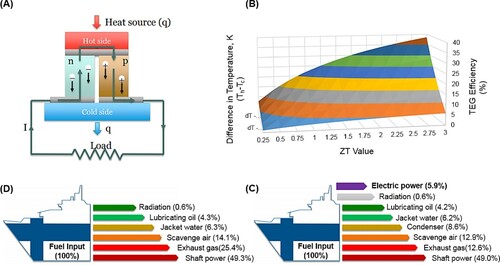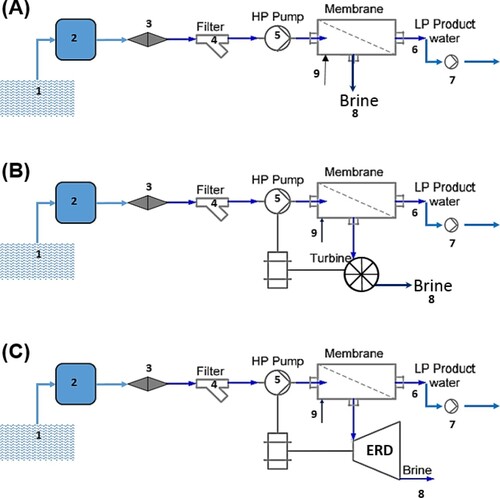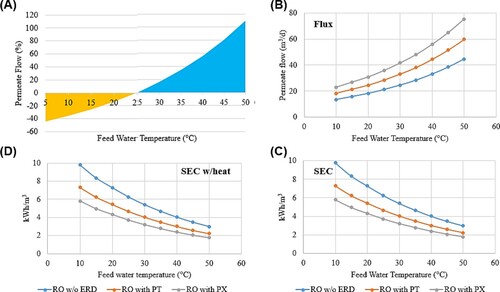Figures & data
Figure 1. (A) Principle of thermoelectric generation from waste heat source; (B) the effects of ZT values and temperature differentials on the electrical conversion efficiency of a TEG; (C) Typical energy efficiency profile and losses in ship operations; and (D) Energy efficiency profile with waste heat recovery through thermoelectric generation.

Table 1. Waste heat sources on the M/V Rosita.
Figure 2. Process schematic of a reverse osmosis (RO) desalination unit with or without energy recovery device: (a) without energy recovery device; with energy recovery devices (b) Pelton turbine; and (c) pressure or work exchanger units (refer to Table for process locations and flow/pressure/energy values).

Table 2 Specific energy consumption calculations without an energy recovery device.
Table 3. Specific energy consumption calculations with a Pelton turbine energy recovery device.
Table 4. Specific energy consumption calculations with a pressure or work exchanger unit.
Figure 3. A generic relationship between the feed water temperature and the permeate flow (A); the effect of feed water temperature on permeate flow rate (B); the effect of feed water temperature on specific energy consumption (C); and the specific energy consumption including thermal energy requirements.

